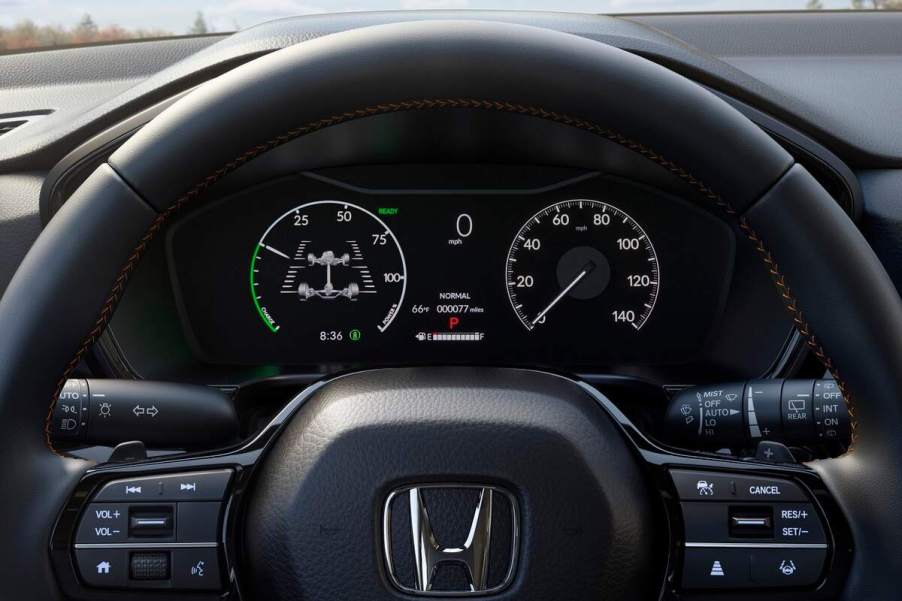
How to Read the Vehicle Stability Assist (VSA) Light in Your Car
Some lights on your vehicle’s instrument panel inform you of needed maintenance. There are so many that it might be easy to ignore them, even with the Vehicle Stability Assist light. However, warnings alert you to potential car safety issues.
What is Vehicle Stability Assist?
Ignoring your vehicle’s dashboard lights could lead to engine damage or a car accident. Cars sold in the U.S. since 2012 have electronic stability control, but we’ll focus on the proprietary Vehicle Stability Assist (VSA) system in Honda and Acura vehicles.
We’ll also explain how to understand what the VSA warning light is trying to tell you. Vehicle Stability Assist is a trademarked term Honda Motor Company applies to its electronic stability control system in Honda and Acura models.
Essentially, electronic stability control systems use sensors to predict the loss of vehicle control due to a skid or slip. When detected, the system reduces engine power and activates the antilock braking system, controlling each wheel independently to retain control.

Honda introduced VSA to the U.S. market in 2000 in the Acura RL sedan. However, VSA debuted in Japan in the Honda Accord in 1997.
Finally, the 2005 Pilot and 2005 Odyssey were the first VSA-equipped Honda-branded vehicles sold in America.
What is the VSA light trying to tell you?
Honda’s VSA system uses wheel speed and steering-angle sensors to monitor vehicle stability. When the system detects a skid, the VSA Activation light illuminates to indicate the system is working to regain control. In most cases, you might not even know your car lost traction.
If the VSA Activation light appears alongside other warnings such as the VSA System, traction, or check engine light, it could mean one of the following:
AutoZone says the VSA Activation light stays on whenever the system is manually turned off or if something prevents it from functioning correctly.
For example, replacing the stock tires with the wrong size. Incorrectly sized tires rotate at different speeds, confusing the system into correcting a skid that’s not happening.
- If both VSA lights stay on with or without the check engine light, the system requires service by a qualified mechanic.
- If the VSA indicator illuminates with the traction control light, the car is experiencing a traction loss.
- If the VSA light flashes, the system is on and activated.
What should you do if your VSA light comes on?
If you’re driving and the VSA light flashes on for a few seconds, it usually means the vehicle has partially lost traction. In this case, take your foot off the accelerator and remain calm.
Once the car regains traction, the light will go off, and you can proceed with caution. In an extended traction-loss event, you might feel the vehicle slipping sideways. In this case, take evasive action and steer into the skid.
If you are unsure what to do to prevent losing control on slippery surfaces, take a driving course or practice driving in the snow.
If your VSA light stays on without traction loss, it might need a reset. In some cases, parking in a safe spot and restarting your car’s engine might clear the VSA indicator.
However, a faulty part in the system could prevent proper operation and leave you unprotected in a dangerous situation. In any case, pay attention anytime your car’s VSA light comes on.





